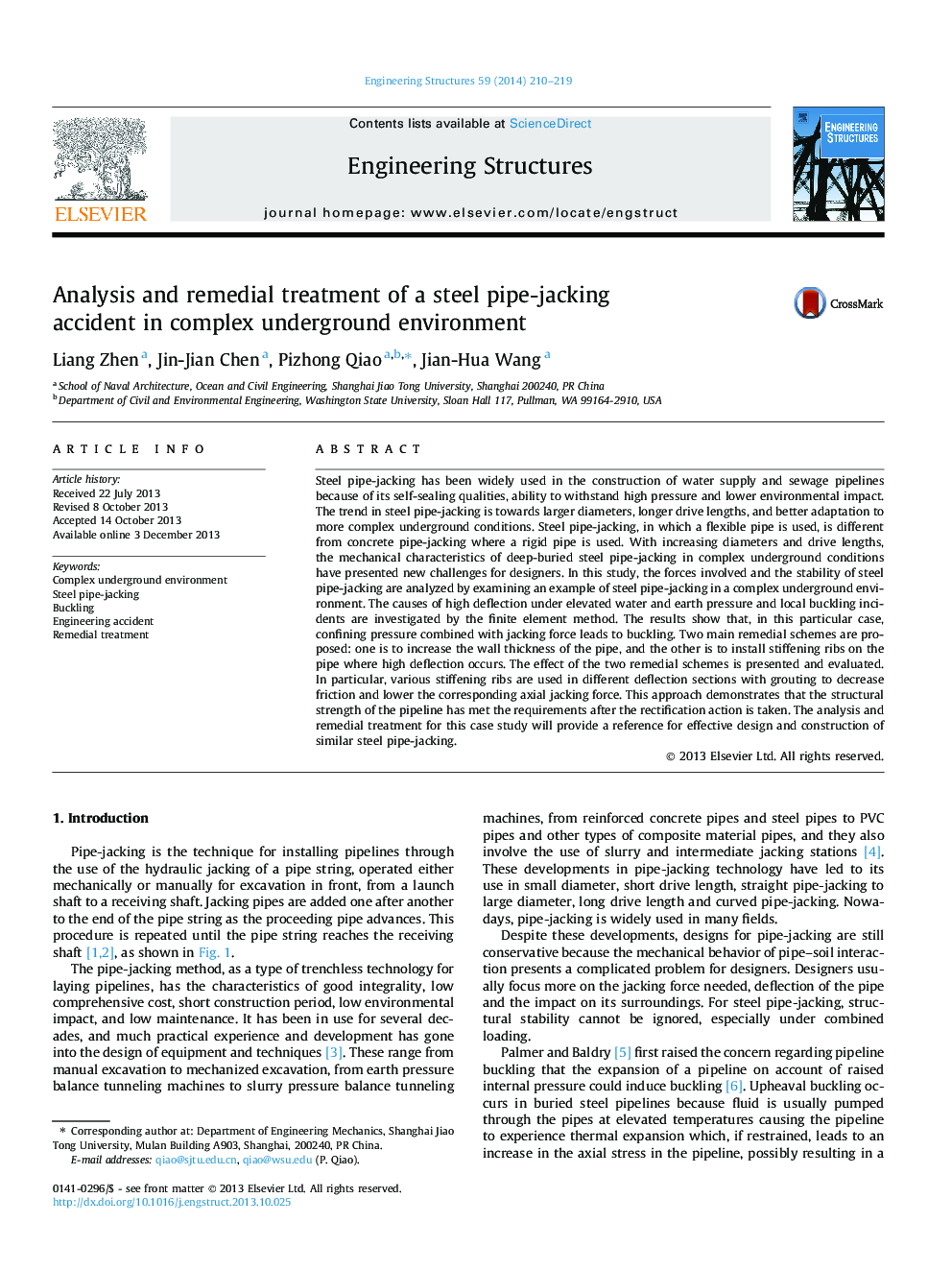| Article ID | Journal | Published Year | Pages | File Type |
|---|---|---|---|---|
| 6740836 | Engineering Structures | 2014 | 10 Pages |
Abstract
Steel pipe-jacking has been widely used in the construction of water supply and sewage pipelines because of its self-sealing qualities, ability to withstand high pressure and lower environmental impact. The trend in steel pipe-jacking is towards larger diameters, longer drive lengths, and better adaptation to more complex underground conditions. Steel pipe-jacking, in which a flexible pipe is used, is different from concrete pipe-jacking where a rigid pipe is used. With increasing diameters and drive lengths, the mechanical characteristics of deep-buried steel pipe-jacking in complex underground conditions have presented new challenges for designers. In this study, the forces involved and the stability of steel pipe-jacking are analyzed by examining an example of steel pipe-jacking in a complex underground environment. The causes of high deflection under elevated water and earth pressure and local buckling incidents are investigated by the finite element method. The results show that, in this particular case, confining pressure combined with jacking force leads to buckling. Two main remedial schemes are proposed: one is to increase the wall thickness of the pipe, and the other is to install stiffening ribs on the pipe where high deflection occurs. The effect of the two remedial schemes is presented and evaluated. In particular, various stiffening ribs are used in different deflection sections with grouting to decrease friction and lower the corresponding axial jacking force. This approach demonstrates that the structural strength of the pipeline has met the requirements after the rectification action is taken. The analysis and remedial treatment for this case study will provide a reference for effective design and construction of similar steel pipe-jacking.
Keywords
Related Topics
Physical Sciences and Engineering
Earth and Planetary Sciences
Geotechnical Engineering and Engineering Geology
Authors
Liang Zhen, Jin-Jian Chen, Pizhong Qiao, Jian-Hua Wang,
